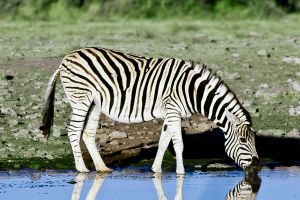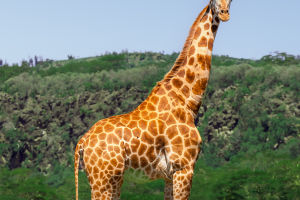When we first heard about the red panda, we thought it was a cub of a giant panda or a relative of a giant panda. Is there any relationship between giant pandas and red pandas?
But in fact, the two of them are genetically divergent from more than 47 million years ago, so they are not even in the same family.
We know that giant pandas are regarded as China's national treasure and are widely loved and protected, but the equally cute red pandas are treated very differently.
Red pandas are mainly found in Bhutan, China, India, Myanmar, and Nepal, and they mostly live in temperate climates in deciduous and coniferous forests at 2,500-4,800 meters. About 50% of these red pandas are found in the Himalayas, and about 38% are found in Nepal.
In 2015, the International Union for Conservation of Nature (IUCN) published a report announcing that the endangered status of the red panda had been changed from "Vulnerable" to "Endangered". The following year, the endangered status of the giant panda was lowered from "endangered" to "vulnerable".
As a result, the giant panda is safe under our protection and its population has increased somewhat. By 2021, there were 673 pandas in captivity and 1,864 pandas in the wild.
At the same time, however, the number of red pandas is declining. According to statistics, the global population of red pandas has declined by 50% in the past 20 years, and today there are fewer than 10,000 red pandas.
Red pandas were first discovered in 1825, before the discovery of giant pandas, so there is something of a twist about their name. When French zoologists first saw this one, with its brownish-red coat and black belly, and a big, fluffy tail, they were truly mesmerized.
The zoologists called it "the most handsome mammal in the world" and gave it the name "Panda". So the name Panda was originally given to the young panda. It was only decades later, after the discovery of the giant panda, that zoologists gradually gave the name "Panda" to the giant panda and called the lesser panda "Red panda" or "Lesser panda".
Both pandas have experienced the same thing since then, and both of them have very cute looks, so many hunters can't help but prey on them. But the truth is that habitat reduction brings far less killing power to the lesser panda than direct hunting.
The red panda was discovered earlier than the giant panda, when people were less conscious of animal protection, and there were more of them than the giant panda, and they were easier to capture.
Therefore many poachers began a fierce attack on the red pandas, taking home all of these walking stuffed animals. The pelts and tails of red pandas are especially popular, and many people kill and skin them, making the pelts into clothes and selling them at high prices.
In the Indian city of Darjeeling, the red panda is the mascot of the local international tea festival, but at the same time, the fur of the red panda is also used to make the groom's clothes.
However, many people do not kill the red panda directly after catching it but keep it in captivity. The long breeding cycle and low reproduction rate of red pandas have led to a high mortality rate of baby red pandas. Most of the captive red pandas are also chained, which restricts their movements and decreases their survival time even further.
With centuries-long hunting, the number of red pandas has declined sharply, yet not every country classifies red pandas as protected animals.


